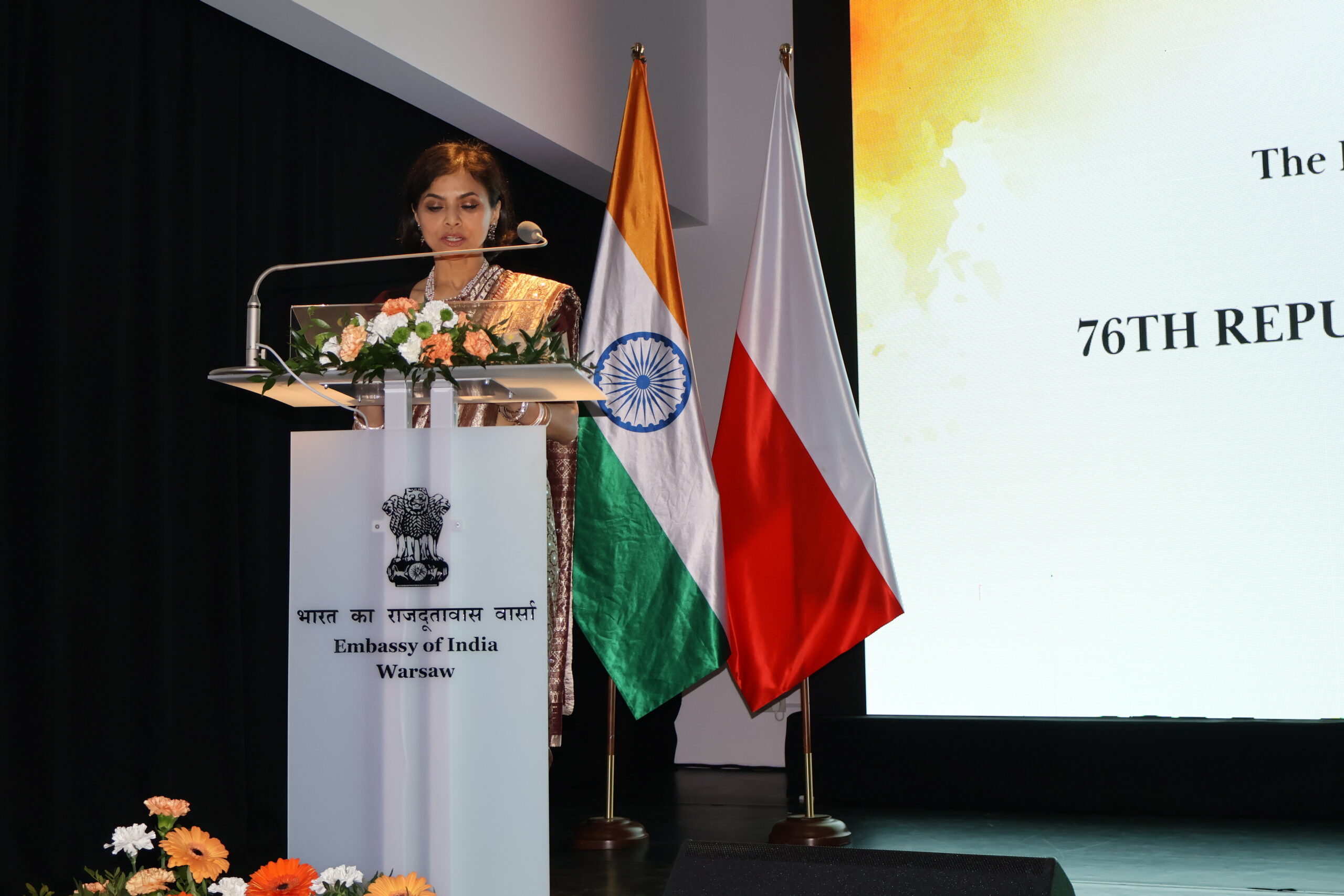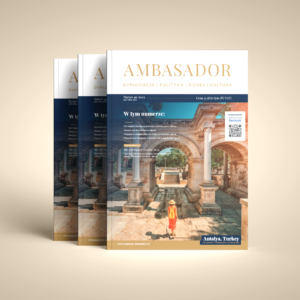On the occasion of the 76th anniversary of India’s Republic Day, H.E. Nagma M. Mallick hosted a reception at the Embassy on 24 January.
H.E. Nagma M. Mallick began her address by welcoming the guests, then recalled the history of the adoption of the Indian Constitution, which laid the foundation for democracy in India.
– The Constitution of India came into force on 26 January 1950. It was adopted by the Constituent Assembly of India on 26 November 1949. Republic Day, therefore, signifies the conscious recognition by the people of India of their own identity as a ‘sovereign, socialist, secular, democratic republic’, as enshrined in the Preamble to our Constitution. Indian democracy is based on and guaranteed by the Constitution. Last year we held a general election – the largest democratic exercise in the world – in which 642 million Indian citizens voted, including 310 million women. The numbers set new world records: it was the highest ever turnout of women in a single election, and also the highest number of voters who voted in a single election. Prime Minister Narendra Modi won the people’s mandate and was sworn in for a third term. Our people’s commitment to democracy and support for Prime Minister Modi was then regularly expressed in the provincial assembly elections held in key states of India – said M. Nagma M. Mallick.
Later in her speech, Ambassador Mallick spoke about the major achievements of her country over the past few decades.
Today, India is the fastest growing economy in the world and has become the fifth largest economy in absolute terms, with a GDP of US$ 3.9 trillion. India’s GDP is expected to grow by 6.4 per cent in the current fiscal year (2024 figures).
The country is a global leader in digital technology. India has the world’s second largest telecommunications network with 1.2 billion mobile phone users, the world’s lowest data tariff of 16 cents per gigabyte, and high data usage of 21.3 gigabytes per month per subscriber.
Indian citizens have enthusiastically embraced digital payments, e-commerce and digital banking. India’s UPI (United Payments Interface – an online payment system) recorded 172 billion transactions in 2024; this is an annual growth of 46%. Amazon has been pushed into second place in India behind Flipkart, India’s e-commerce rival, which controls more than a third of the Indian market. In digital banking, meanwhile, e-wallets such as PayTM and others are used by hundreds of millions of people, including vegetable vendors and micro-entrepreneurs.
India already has an installed capacity of 200 gigawatts of renewable energy, underlining its commitment to green energy. What’s more, India is aiming to make the green transition a social movement – 10 million families have already signed up for the world’s largest solar rooftop programme. India also launched the International Solar Alliance in 2015 and more than 100 countries have now joined.
India has also made significant strides in indigenous defence production to ensure defence self-sufficiency. Currently, India produces land, air and naval systems under the public-private system, i.e. the Dhanush artillery system, the Arjun main battle tank, infantry fighting vehicles, unmanned aerial systems, and in the last decade, 40 units have been inducted into the Indian Navy, including 33 ships and seven submarines. As any as 39 vessels have been built in Indian shipyards, including the aircraft carrier INS Vikrant and the nuclear submarines INS Arihant and INS Arighat.
India has also achieved food self-sufficiency through the so-called Green Revolution. From being a net importer of food in the 1950s and 1960s, it became self-sufficient in food production in the late 1960s by planting high-yielding dwarf varieties of rice and wheat. Today, India is able to feed a population of 1.4 billion people and to export grain to the rest of the world.
The Indian Space Research Organisation (ISRO) has also made significant achievements in the past year. As part of the SpaDeX mission, ISRO successfully docked satellites in space earlier this year, becoming the fourth country to develop this technology, which is crucial for sending supplies to space stations and manned missions in space. India’s Polar Satellite Launch Vehicle rocket successfully placed the European Space Agency’s Proba-3 satellites into a designated orbit in December 2024. Indian scientists are trying to grow crops in space – black-eyed pea seeds germinated on 30 December, offering hope for future food crops in space, as the Ambassador pointed out.
In December 2024, Indian teenager Gukesh Dommaraju defeated the defending champion to become the youngest ever World Chess Champion at the age of 18. Gukesh’s official coach is Polish grandmaster Grzegorz Gajewski. Three other Poles, Radoslaw Wojtaszek, Jan Krzysztof Duda (sparring partner) and Jan Klimkowski are part of his coaching team.
In 2025, India will complete the Genome India project. This is a milestone in Indian biotechnology that will help scientists understand India’s genetic landscape.
– Bilateral economic relations between the two countries are progressing well. Annual bilateral trade between the countries is now close to US$ 6 billion. Bilateral investment is also increasing. Indian companies in Poland employ more than 10,000 skilled Poles – emphasised JE Nagma M. Mallick.
In his speech, Władysław T. Bartoszewski also drew attention to the multidimensional aspect of the relations between Poland and India.
Apart from Władysław T. Bartoszewski, Secretary of State at the Ministry of Foreign Affairs, the guests of honour at the ceremony were Deputy Speakers of the Polish Sejm Dorota Niedziela and Krzysztof Bosak, Krzysztof Kwiatkowski Senator of the Republic of Poland, Marian Banaś President of the Supreme Chamber of Control, representatives of the Chancellery of the President of the Republic of Poland, representatives of the Chancellery of the Prime Minister of Poland and Mariusz Frankowski, Deputy Governor of the Mazovian Province. The ceremony was also attended by the heads of diplomatic missions in Poland and representatives of the business and cultural communities, as well as friends of the Embassy.
A major highlight of the reception was a performance by Indian dancer Madhavi Mudgal, who is a leading Odissi dancer, choreographer and guru. She and several other dancers performed a very sensual dance originating from the eastern state of Orissa. It is famous for its extraordinary grace and tribhang, the three-way bending of the dancer’s body. Madhavi and her dancers began with verses from the Vedas, ancient Indian texts, and then presented Vadya Vaividhya, a dance celebrating the percussion instruments of Orissa. The exceptional skill with which the dancers moved around the stage, the musical accompaniment and the richly decorated, colourful Indian costumes all combined to create a beautiful dance performance. After the artistic performance, H.E. the Ambassador invited the guests to view a photo exhibition dedicated to the 70th anniversary of India-Poland relations, showcasing the ties between the two countries over the decades.



Sledź nas na: